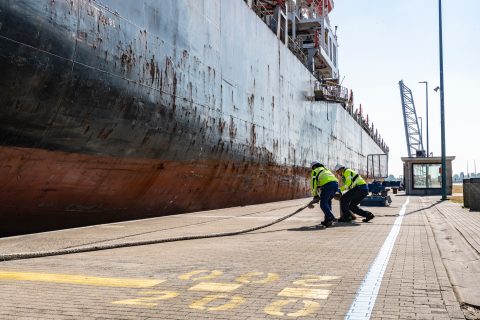
Geopolitics hurt Port of Antwerp-Bruges throughput, breakbulk slips 18.8 pct
2023 was another challenging year for Port of Antwerp-Bruges. Geopolitical tensions and slowing global economic growth are driving down industrial production and trade flows. As a result, total throughput, which was 271 million tonnes of cargo in 2023, is down 5.5 per cent from the previous year.
The throughput of conventional breakbulk has returned to pre-Covid-19 levels after a strong post-Covid-19 recovery between spring 2021 and September 2022. However, it is still down by 18.8 per cent compared to the 2022 levels. The handling of steel, which is the major product group within conventional general cargo, has decreased by 16.9 per cent due to lower demand and a decline in European steel production. Exports have held up better than imports with a decline of 15.5 per cent and 17.9 per cent respectively.
Weak global economic growth and lower demand for commodities is weighing on global demand for container transport. For Port of Antwerp-Bruges, this corresponds to a decrease in container throughput of 6.3 per cent in tonnes and 7.2 per cent in TEUs, compared to 2022. In contrast, Port of Antwerp-Bruges’ market share in the Hamburg – Le Havre range rose 0.6 per cent points to 30.2 per cent in 2023.
Roll-on/roll-off traffic has experienced a slight decrease of 2.1 per cent, but the throughput of new cars has increased and boosted the transport equipment throughput (in units). In 2023, 3.56 million new cars were handled, showing an annualised growth of 9.0 per cent. RoRo vessels have seen a slight decrease of 1.5 per cent in the throughput of unaccompanied cargo (excluding containers). More than half of these flows are linked to the UK, which have decreased by 4.9 per cent, while traffic related to Ireland has increased sharply by 17.9 per cent. Scandinavia traffic is holding up.
The dry bulk segment has experienced a decline of 13.9 per cent on last year. The demand for coal was high in 2022 due to the energy crisis, but has since fallen sharply. Fertilisers, which were already down last year partly due to sanctions against Russia and increased fertiliser prices, have also further decreased this year.
Zeebrugge welcomed 169 cruise ships and 953.048 passenger movements in 2023, making 2023 a record year. A spread of cruises both throughout the year and during the week, ensured a staggered inflow.
In 2023 20.156 seagoing vessels called at Port of Antwerp-Bruges, a drop of 4.2 per cent. The total gross tonnage of these vessels grew by 2.6 per cent to 657 million GT.




